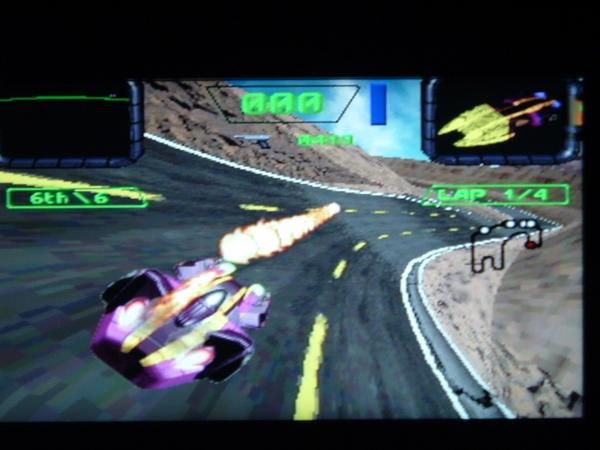Games That Pushed The Envelope... I Salute You
Games that far surpass their platform’s assumed technical limits fascinate me. Even if they happen to be bad games – and some of them are, indeed – I will still go to great lenghths to add them to my personal collection.

Games that far surpass their platform’s assumed technical limits fascinate me. Even if they happen to be bad games – some of them are, indeed – I will still go to great lenghths to add them to my personal collection.
Here’s why:
1. Technically sophisticated titles breath new life into old platforms
The best example out there is Donkey Kong Country. Where Sega failed with numerous add-ons, the SNES could run DKC bone stock in glorious pre-rendered 3D. Star Fox is another great example. While some regard Nintendo’s use of the Super FX chip as “cheating,” the game still took SNES gameplay to the next level – with strong sales to boot.

2. Technically sophisticated titles reward top-tier engineering
One of the coolest things about games that push the limits is that they reveal the real capabilities of certain systems. Everyone knows that the Sega Saturn was a powerful machine. However, coding for multiple processors wasn’t very popular in 1995 – still isn’t in 2009 – so the Saturn rarely displayed its real power. Most developers simply gave up, making use of a single RISC CPU instead. Now, take Virtua Fighter 2 and Sega Rally. VF2 ran at 60 frames per second and 720×575 resolution. Sega Rally also hit solid 60 FPS and probably made use of the same high-res mode. While the Saturn will never surpass the PlayStation in the average gamer’s eyes, at least these games show what the console could really do.
3. Technically sophisticated titles give you next-gen NOW
My next two examples are from the lovable first-generation Xbox: The Chronicles of Riddick: Escape from Butcher Bay and Doom 3. Both games made extensive use of normal and bump-mapping -- PlayStation 2 and GameCube couldn't dare try something similar. I still play Doom 3 and the game certainly hasn’t lost its next-gen look. Another example close to my heart is Solaris for the Atari VCS/2600. Solaris is amazing in many ways, no the least the fact that it runs on fairly underpowered hardware and plays better than most NES games. Essentially, it was giving Atari owners the same graphics found in much newer games, running on then next-gen platforms.

4. Technically sophisticated titles have no shame being BAD
Just like the next guy, I prize quality in my games. I once had to play Halo 3 to erase the bad taste left by the Turok remake. Still, some games are incredibly bad but still worth a look if you’re into game development. Two examples from the FMV revolution: Crash & Burn for the 3DO and Mega Race for the Sega CD. Crash & Burn, like Mega Race, had a streaming FMV track with cars as pre-rendered 3D objects. On the 3DO, Crash & Burn was people’s first foray into what 32-bit console gaming could achieve – as a pack-in, no less. On the Sega CD, Mega Race proved that Sega’s quirky disc-based console could do a decent job at emulating a high-end PC setup. The FMV was clear and the game played well-enough – so even being BAD, adding those games to your library can be very instructive (to say the least). My last example in this entry is Indiana Jones and the Infernal Machine. Today I see it as a Tomb Rider derivative, an exploration-based 3D platformer centered around George Lucas’ hugely successful franchise. Although I can have fun playing Infernal Machine, I can’t call it a great game. A correct game, maybe. The title’s technical prowess is a completely different story: Infernal Machine looks and sounds AMAZING. Factor 5 went all out on this one. The game uses MP3 compression for its entire soundtrack (in software!). Factor 5 was also one of the only developers that ever got to mess with the Nintendo 64 microcode. They wrote their own. How hardcore is that?

5. Technically sophisticated titles take a lot of work
With filmmaking, you can always spot that one movie where the director “went too far.” With Coppola, it’s Apocalypse Now. Scorsese has Gangs of New York. George Lucas has Star Wars Episode II: Attack of the Clones. In all of these, directors wanted to transcend their own limitations and come up with something new. Where Coppola marginally succeeded – Apocalypse Now is a classic, after all – others failed. Now, I believe in these failures. I think they made those directors better, more focused for sure. When you take a game that tried to do too much – in the technical department – you end up with what seems like a tech demo. All show and no soul. Geist for the GameCube comes to mind. Looked beautiful, wasn’t much fun to play. Doom 3: full of atmosphere and scares, but lacking in the shooting section of its FPS moniker (some call it a survivor horror!) Virtua Racing for the Sega Genesis, brought forth by SVP goodness but with only ONE car and THREE tracks (with a hidden “mirror mode”).

So that’s why I love games that push the envelope. Because they did it. Independently from review scores, sales numbers, trends and personal taste, they have achieved technical excellence and a spot in video gaming’s history books.
I now feel a sudden urge to boot up Virtua Racing on my X’Eye. Talk to you later :)
Read more about:
BlogsAbout the Author(s)
You May Also Like













